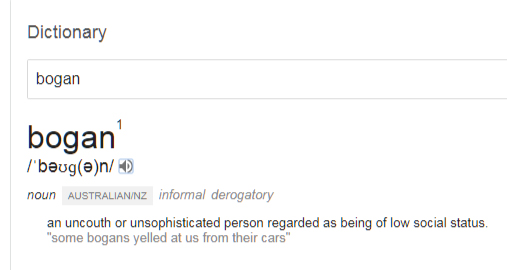Search This Blog
"Truth comes only to conquer those who have lost the art of receiving it as a friend." ~ Ravi Thakur
Featured
- Get link
- X
- Other Apps
Stuck in the Moment: The Hearsay, Myth, and Science of Penile and Vaginal Entrapment During Sex
In various cultures, there are tales of couples mysteriously becoming physically fused during sexual intercourse, often attributed to supernatural forces or divine punishment. However, beyond mythology and folklore, there are scientific explanations for this phenomenon, albeit rare, and practical solutions for those who encounter it.
Understanding the Physical Mechanism
The medical term for getting "stuck" during sex is penile entrapment or vaginal entrapment, depending on the individuals involved. This occurs when the muscles in the pelvic region contract involuntarily during orgasm, leading to a temporary tightening or clamping down of the vaginal muscles in women or the penile muscles in men. When this happens, withdrawal may become difficult, causing the partners to feel temporarily "stuck" together.
Causes
Pelvic Muscle Spasms: Pelvic muscle spasms, triggered by intense sexual arousal and orgasm, can cause the muscles to contract forcefully, making it challenging to separate from one another.
Positioning: Certain sexual positions, particularly those that involve deep penetration or unusual angles, can increase the likelihood of entrapment. Positions that put pressure on specific areas of the pelvic floor muscles may exacerbate muscle spasms, making it more difficult to disengage.
Inexperience or Anxiety: Individuals who are new to sexual activity or feel anxious about it may experience heightened muscle tension, increasing the risk of getting stuck during sex.
Physical Conditions: Certain medical conditions, such as vaginismus in women or erectile dysfunction in men, can contribute to muscle spasms or difficulty with penetration and withdrawal, potentially leading to entrapment.
What to Do When Stuck
Stay Calm: Panicking can exacerbate muscle tension and make it more challenging to disengage. Remind yourself that this is a temporary situation and focus on relaxing your muscles.
Communicate: Open communication with your partner is crucial. Inform them of the situation calmly and work together to find a solution.
Change Positions: Experiment with different positions that may alleviate muscle tension and facilitate separation. Slowly and gently try adjusting your bodies to find a more comfortable position for withdrawal.
Relaxation Techniques: Deep breathing exercises, progressive muscle relaxation, or guided imagery can help reduce muscle tension and facilitate disengagement.
Medical Assistance: In rare cases where attempts to disengage are unsuccessful or if there is significant discomfort or pain, seeking medical assistance may be necessary. A healthcare professional can provide guidance and assistance in separating safely.
Prevention Strategies
Foreplay and Relaxation: Engage in ample foreplay to ensure both partners are adequately aroused and relaxed before intercourse. This can help reduce muscle tension and minimize the risk of entrapment.
Communication and Trust: Establishing trust and open communication with your partner can help alleviate anxiety and tension, reducing the likelihood of muscle spasms during sex.
Experimentation with Positions: Explore different sexual positions to find ones that are comfortable and enjoyable for both partners while minimizing the risk of entrapment.
Medical Evaluation: If you or your partner experience recurrent difficulties with penetration or withdrawal during sex, consider consulting a healthcare professional to rule out any underlying medical conditions that may contribute to the problem.
While the notion of couples getting "stuck" during sex may seem fantastical, there are scientific explanations for this phenomenon rooted in muscle physiology and sexual mechanics. By understanding the causes and implementing practical solutions, individuals can navigate these rare occurrences with confidence and ensure a fulfilling and pleasurable sexual experience.
Some people erroneously refer to this sticky situation ad "penis captivus"—a rare and poorly documented phenomenon where the penis becomes temporarily trapped in the vagina due to involuntary muscle contractions, making withdrawal difficult or impossible. This occurrence is often described anecdotally and is not widely recognised in medical literature. However, it shares similarities with the concept of penile entrapment discussed above.
In the situation described above, penis captivus would fall under the broader category of penile entrapment, where either partner experiences difficulty disengaging during intercourse due to pelvic muscle spasms. The causes and solutions for penis captivus would align with those outlined for penile entrapment, focusing on relaxation techniques, communication, and experimentation with different positions.
The scientific term for the female counterpart of penis captivus is vaginal entrapment. Similar to penis captivus, vaginal entrapment occurs when the muscles of the vagina contract involuntarily, making it challenging for the penis to be withdrawn during intercourse. This phenomenon shares the same underlying causes and solutions as penile entrapment, emphasizing the importance of relaxation, communication, and experimentation with sexual positions.
- Get link
- X
- Other Apps
Popular Posts

The One On Why Uganda Produces Shitty Ads
- Get link
- X
- Other Apps

Of Australian Bogans Masquerading As Creatives In Nairobi Agencies
- Get link
- X
- Other Apps




Comments
Post a Comment